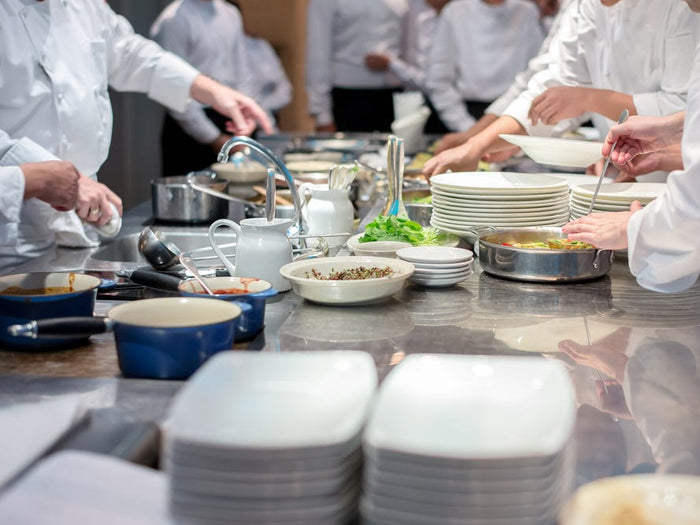The Four Goals of Misbehavior Series: Part One

When is the last time your child’s behavior completely baffled you? What causes children to misbehave when, in your view, they clearly should know better? It can be hard to understand what is motivating your child to behave, but understanding what drives behavior is a key component of positive parenting. When we seek to understand that is motivating our children, we are better able to address the cause of the behavior rather than reacting to the behavior itself. That is where real change takes place – at the root. If we don’t address it there, it will just keep cropping up again and again.

I recently discovered the work of Dr. Rudolf Dreikurs. He was a psychiatrist who founded and was the medical director of the Community Child Guidance Center in Chicago. Dreikurs was influenced by social psychologist Alfred Adler who believed that the central motivation of all humans is to belong and be accepted by others. He believed that all behavior was purposeful and directed toward achieving social approval. Dreikurs suggested that all misbehavior is eh result of a child’s mistaken assumption about how to find a place and gain status. He did not believe in using punishment, rewards, or praise to change behavior, but rather that natural consequences and encouragement were the most useful techniques for preventing misbehavior.
Following is an overview of the first two of Dreikurs’ four goals of misbehavior along with my own suggestions on how to deal with each one.
Goal one: Attention
One of the common motivators of misbehavior, according to Dreikurs, is to get attention. This is driven by the belief that they do not matter (belong) unless they are being noticed or served. Children who are seeking attention with negative behaviors feel insignificant. Parents are often told to ignore children when they appear to be seeking attention because it is a popular opinion that giving children the attention they seek will reward or reinforce negative behaviors. Relating to this advice, Dr. Gordon Neufeld of the Neufeld Institute says this: “What else is there to want? And if we see a child who wants attention, why wouldn’t we give it to them? Why wouldn’t we meet these basic needs of affection, attention, of mattering and significance?”
From a Positive Parenting standpoint, behavior is always communication. When children seek attention in negative ways, this is a cry for help. By ignoring the child, we are ignoring their plea. When children are clingy and needy and we ignore this need, we are rejecting them. If children are seeking attention and attachment, they are in need of attention and attachment, so we can at least begin to understand their behavior and formulate a response from this place rather than from an idea that they are needlessly seeking attention and should be ignored. This doesn’t mean, of course, that you necessarily give in to demands or rearrange your plans. It simply means that you first seek to understand what is driving the behavior. When children are exhibiting troubling behavior that appears to be attention-seeking, you can set a limit on that behavior while still providing the attention and love needed by following the 3 steps to positive discipline discussed in full detail here.

Goal two: Power
It’s no wonder children feel so powerless. They have very little control in their lives, and of course they shouldn’t have too much power yet because they haven’t matured enough to make knowledgeable, wise decisions, but seeking control isn’t a bad thing. Think of the anxiety you feel when you don’t have control! Though the behaviors that children use to gain control are frustrating, we can take a step back and look at what is motivating them.
Our tendency is to feel that our authority is being threatened and anger is a common response to this threat, so our first reaction is often to posture ourselves for a fight. It’s a natural reaction when we feel threatened, so one of the things we practice in Positive Parenting is softening and responding. Children won’t hear us until they feel heard themselves, so when we try to shut down their feelings or their voices, they naturally push back, and we find ourselves locked in a power struggle that no one really wins. However, by meeting our child with empathy, we can reset the tone of the interaction. It may be something as simple as, “I hear you” or “I understand.” When spoken genuinely, empathy is a powerful diffuser of power struggles because it communicates “I understand you and I’m on your side.”
My advice is to offer a reasonable choice or alternative. Kids hear no a lot, and many of those no’s are necessary. However, it is very frustrating to be told no all the time and to have so little control over your own life. Is there an alternative you could offer that makes you both happy? Sometimes I think we are afraid that offering choices and negotiating are signs of weak parenting and we are afraid these actions compromise our authority, but I believe it shows kids that we respect them as individuals, and this inspires them to respect us more.
Another tip is to disengage without disconnecting. When disengaging from a power struggle, we are effectively ending the conversation with a “that’s final.” However, there are two ways to do this, one that disconnects and one that invites connection. As you might imagine, “Because I said so and that’s final! One more word about it and you’re grounded!” might be effective at ending the power struggle (or it might not!) but it leaves the relationship with your child on shaky ground. We can stick to our guns and say the same thing but in a way that isn’t so harsh. Instead, try saying “I love you too much to argue with you, so let’s not discuss this any further. If you need to take some time to cool off, you can. When you are ready, I’d love for you to come and find me.” This communicates I’m not willing to change my position but I still love you and I want you around, and those last two messages are vital to a strong connection and to a child’s self-worth.
written by Rebecca Eanes


















